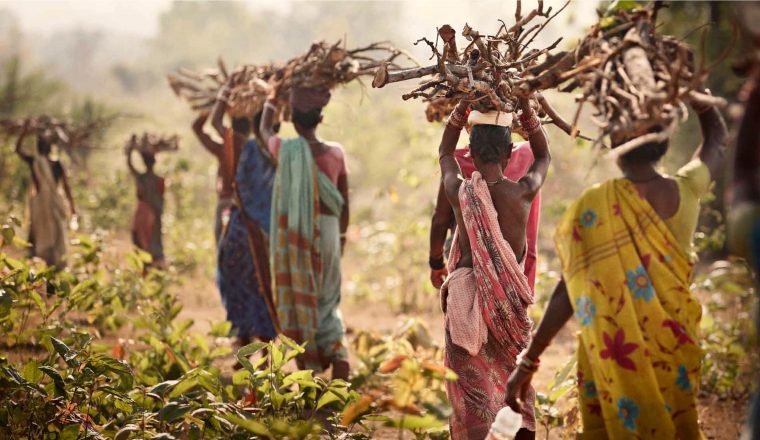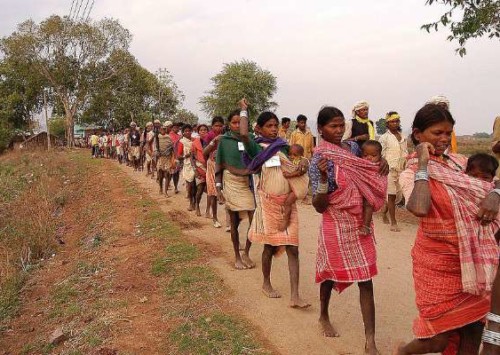Job crisis for rural women in India
Rural women in India are facing the brunt of job crisis in India with around 20.8 million fewer women looking for jobs, according to the Periodic Labour Force Survey (PLFS) 2017-2018 report by NSSO.
It is an everyday task for Malti Saddar, 45, to finish her house hold chores early morning and take a round at the local municipal office just to find out if there is any kind of work for her or not. Earlier, Saddar who used to work in the fields as a daily wage labourer, is now left with no work.
Hailing from Thakurnagar, a small village in the eastern state of West Bengal, it has become extremely difficult for her to get hold of a job. “At a time when the men in our villages are moving to the cities because of job crisis, getting a job being a woman is even more difficult,” says Saddar.
It is not just Saddar or her village that is bearing the brunt of job crisis for women. According to the Periodic Labour Force Survey (PLFS) 2017-2018 report by NSSO, over 50 million rural women have left the national job market since 2004-05. Besides that, female participation has gone down by seven percentage points since 2011-12, amounting to around 20.8 million fewer women looking for jobs.
The report which the government has withheld, says that the decline is more acute in the working age group of 15-59 years. In this bracket, the rural female participation rate fell from 49.4 pc in 2004-05 to 35.8 pc in 2011-12 and further to 24.6 pc in 2017-18. In effect, participation of rural women of working age has been halved since 2004-05.
Another alarming figure shows that more among the educated were jobless in 2017-18 than they were in 2004-05. For educated women in rural areas, unemployment was at 17.3 pc in 2017-18 compared to 9.7 pc-15.2 pc during 2004-05 to 2011-12. The rate of unemployment among women in rural areas between the ages of 15 and 29 years jumped to 3.6 pc in 2017-18 compared to 4.8 pc in 2011-12, according to the survey.
Why the sudden fall?
As the job market in India is shrinking women are less likely to get hold of a job in comparison to men. Women working in unstable informal sectors are mainly facing the job crisis in the Indian market. According to the Centre for Monitoring Indian Economy (CMIE), 90 pc of around 10 million jobs lost last year were held by women.
Prime Minister Narendra Modi’s two signature economic policies – demonetisation in 2016 and the implementation GST in 2017 had a downbeat impact on women more than men, since they are more likely to be employed in vulnerable, informal workplaces.
After demonetisation, there was a sharp increase in demand for work under the Mahatma Gandhi National Rural Employment Guarantee (MNREGA), which guarantees 100 days of work to every rural family within 15 days and 5 km of where they live. On November 7, 2016, the person-days demand was 3.4 million across the country that had jumped to 5 million by December 12, and to 8.2 million by the beginning of January.
“India’s unemployment rate shot up to 7.4 pc in December 2018. This is the highest unemployment rate we’ve seen in 15 months. The rate has increased sharply from the 6.6 pc clocked in November,” says the report.
Another major reason of the job crisis is the machines that are used for farming thus replacing human labour. The little bit of work that is demanded of humans is done by the men thus leaving no work for women.
According to a data on labour force participation by CIME, in February 2019, the labour force participation rate for working-age population of India stood at 42.74 pc. In January 2016, it was 47.70 pc. However, it was the women who faced the brunt of the fall. In January 2016, the labour force participation rate among women was at 16.81 pc that has fallen to 10.97 pc in February 2019.
The urban women
Among urban female workers, the share of non-agricultural informal sector – unincorporated proprietary and partnership enterprises in areas such as manufacturing garments, paper, wood and straw products, etc – came down by 13.6 pc.
The share of non-agricultural informal sector has also seen a decline by 13.4 pc among rural female workers but that has been the trend since 2004-05. For the urban female workers, the slide is sharp.
However, the situation seems to be better in the share of regular wage/salaried jobs for women that have registered an increase since 2011-12. In the urban sector, the jump is by 9.6 pc and, in actual terms, accounts for an additional two million jobs. In the rural sector, the segment’s share increased by 4.9 pc and it translated into 1.5 million more jobs. Also, female participation in the urban segment saw growth by 0.4 pc points in the six years ending 2017-18. This resulted in 1.2 million more job seekers.












